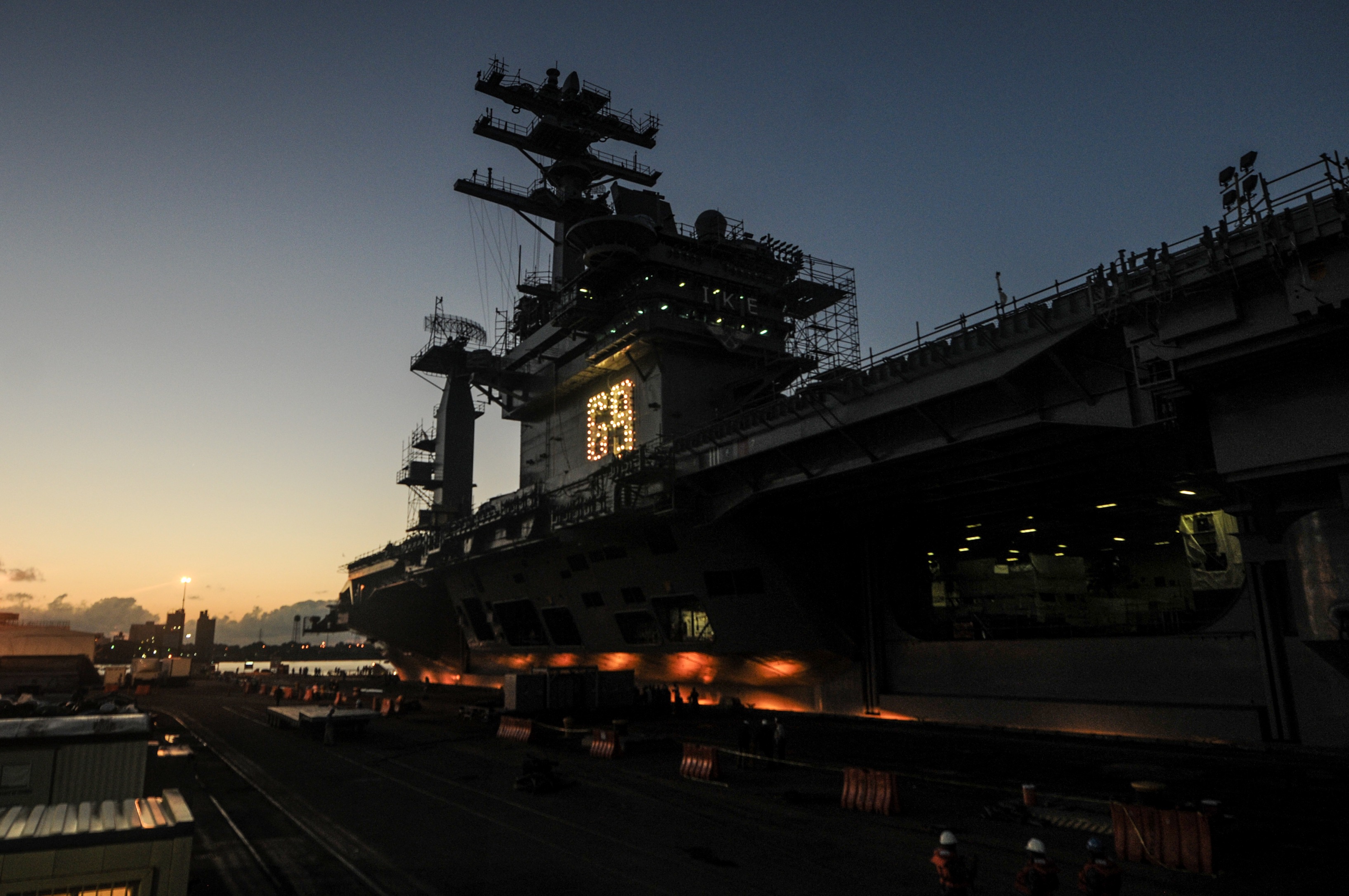
The Navy has temporarily suspended nuclear work at the Norfolk Naval Shipyard, Va. (NNSY) following two lapses in handling potentially contaminated material, officials with the yard told USNI News on Thursday.
“The problems were minor and did not result in any impact to the safety of the public, the environment or employees,” according to a NNSY statement.
In both cases, the potentially radioactive material was handled incorrectly.
“Had the procedures been followed, the material would have been shown to not to contain radioactive material,” read the statement.
It’s neither clear how long the suspension will remain in effect, nor what conditions need to be met to allow nuclear work to continue.
“The pause will be lifted when we have confidence that the fundamental causes are identified and appropriate corrective actions are in place,” according to a seperate Thursday statement from NNSY.
The suspension followed the most recent incident that occurred on Sept. 13.
The Navy did not announce the suspension; it was first reported on Thursday by The Virginian Pilot.
Currently there are three ships in the yard — aircraft carrier USS Dwight D. Eisenhower (CVN-69), nuclear ballistic missile submarine USS Maryland (SSBN-738) and the Los Angles-class attack boat USS Albany (SSN-753).
The yard said it was too early to tell if the 12-day pause in nuclear work would affect the maintenance work on the two boats and the carrier.
“High priority work continues with additional supervision as required to minimize impact of the pause,” according to the statement.
The Pilot quoted a former Navy official who called the pause, “a significant shutdown.”
For its part, the Navy characterized the suspension of nuclear work as normal procedure.
“Work pauses are part of the Naval shipyard process of aggressively identifying small problems to correct them before they become larger problems,” according to the statement.
“It is not uncommon for NAVSEA naval shipyards to utilize work pauses as a tool to ensure work is conducted in the proper manner and continues to meet the high standards required.”
Norfolk Naval Shipyard is one of four public shipyards that are responsible for the bulk of the service’s ship maintenance.
The yard employs about 9,000 workers and is the largest public shipyard on the East Coast.
The following is the complete Sept. 25, 2014 statement from Norfolk Naval Shipyard provided to USNI News.
NNSY decided to pause nuclear work to ensure that we are following all of our established processes for controlling potentially contaminated equipment. A few minor problems recently occurred involving the control of the equipment. NNSY is reviewing the problems to identify root causes and establish corrective actions.
The material was potentially contaminated with radioactivity which would require controlling the material until it was certified to releasable. There were two instances where the processes for controlling potentially radioactive material were not followed. In these cases, had the procedures been followed, the material would have been shown to not to contain radioactive material.
The problems were minor and did not result in any impact to the safety of the public, the environment, or employees. However, in order to ensure we maintain our high standards for performing naval nuclear work, NNSY works on small problems aggressively to prevent larger issues from ever developing.
It is not uncommon for NAVSEA naval shipyards to utilize work pauses as a tool to ensure work is conducted in the proper manner and continues to meet the high standards required. Work pauses are part of the Naval shipyard process of aggressively identifying small problems to correct them before they become larger problems.
As the pause was recently initiated, it is too early to determine impact on current maintenance availabilities. High priority work continues with additional supervision as required to minimize impact of the pause.





